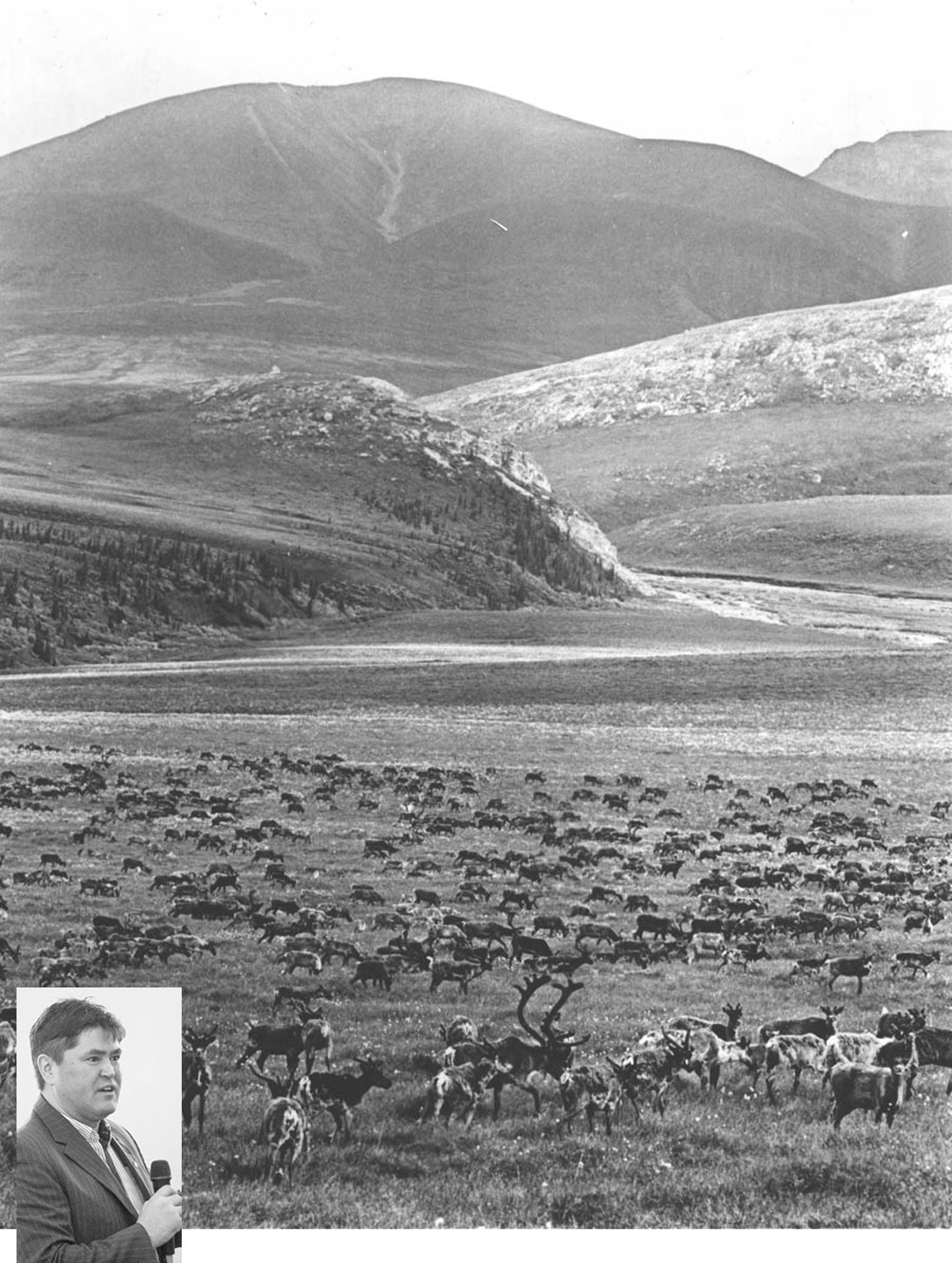Parties celebrate caribou management accord
Five Indigenous governments with a cultural connection to the Porcupine caribou have signed off on a new approach to manage the harvest if the herd gets into trouble.
By Chuck Tobin on August 28, 2019
Five Indigenous governments with a cultural connection to the Porcupine caribou have signed off on a new approach to manage the harvest if the herd gets into trouble.
The ceremony and celebration were held in Inuvik on Tuesday afternoon.
The Native User Agreement sets out a means of providing the eight communities depending on the herd with a collaborative approach to not only manage the harvest but also share in it.
It provides for community hunts by one community to support another if there is a need.
The agreement establishes several measures that can be taken if the Porcupine herd falls to 80,000 or fewer animals. The population is currently estimated at well over 200,000 caribou.
But the Native User Agreement sets out the foundation of what steps can be taken if the population plummets.
“This is a very important time for us, once again, to participate in this very historic document,” Darius Elias of Old Crow’s Vuntut Gwitchin First Nation said in a telephone interview Wednesday from Inuvik before the ceremony began.
“It is important to us, as it shows Indigenous self-governance is working in the North.”
It’s an agreement about stewardship and respect for the herd that will be passed down to future generations, he said.
Elias explained it’s about putting in place a mechanism to deal with a troubled population if the time comes, considerating such factors as food security and the dependency of each community on the caribou.
All but two of the barren caribou herds across northern Canada are heading in the wrong direction, Elias pointed out.
He said it’s difficult to predict what the future will bring for the Porcupine herd.
“Now is the time to plan,” he said.
The Native User Agreement was signed by Chief Dana Tizya-Tramm of the Vuntut Gwitchin, Chief Roberta Joseph of Dawson City’s Tr’ondëk Hwëch’in, Chief Simon Mervyn of the First Nation of Na-Cho Nyak Dun in Mayo, Grand Chief Bobby Jo Greenland-Morgan of the Gwich’in Tribal Council representing the communities of Fort McPherson, Inuvik, Aklavik and Tsiigehtchic, and chair Larry Carpenter of the Inuvialuit Game Council, representing Inuvik, Aklavik and Tuktoyaktuk.
As long as the caribou remain above a population of 115,000 – the green zone – members of the Indigenous governments will retain their right to hunt Porcupine caribou anywhere they range in Canada without restrictions, as set out in the 1985 Porcupine Caribou Management Agreement.
But if it drops to 80,000, the commission to be formed under the new user agreement will have authority to implement management plans that include allotting the share of the total allowable harvest among the communities.
The total allowable harvest in times of trouble would still be established by the Porcupine Caribou Management Board.
The commission would, for instance, take that allocation and determine how it would shared among the communities.
It would consider a community’s food security and clothing requirements, and the availability of other wildlife to meet the community’s food security needs.
The commission would assess the uniqueness of Old Crow, the only Yukon community without road access, just as the existing Porcupine Caribou Management Agreement does.
Elias said the user agreement shows how the Indigenous governments and the northern communities have their house in order when it comes to the herd’s protection.
Lindsay Staples, a facilitator with the working group who forged the agreement, explained when the 1985 agreement was signed in Old Crow, the Inuvialuit were the only ones to have a land claim settlement.
Since then, all the Indigenous governments have established self-governing authority in subsequent settlements, he pointed out during an interview Tuesday.
Staples said the Native User Agreement meshes the provisions of the 1985 agreement with the modern-day treaties of each of the five governments.
It establishes an integrated approach to manage the harvest of the Porcupine caribou across all five traditional territories when the herd is in trouble, he explained.
Staples said it does not affect user groups in Alaska.
But that does not mean it won’t serve as an example of a collaborative approach to management when the herd is vulnerable, he said.

Comments (2)
Up 8 Down 10
Caribou eater on Aug 29, 2019 at 9:54 pm
TB you are making the mistake of comparing this to the existing legal system. A deeper understanding of how FN law works would help in this case.
Up 18 Down 8
Thomas Brewer on Aug 28, 2019 at 4:38 pm
There doesn't seem to be anything in this agreement to restrict or sanction FN hunters that choose to not follow the commissions decisions. Without teeth this is merely a paper exercise.